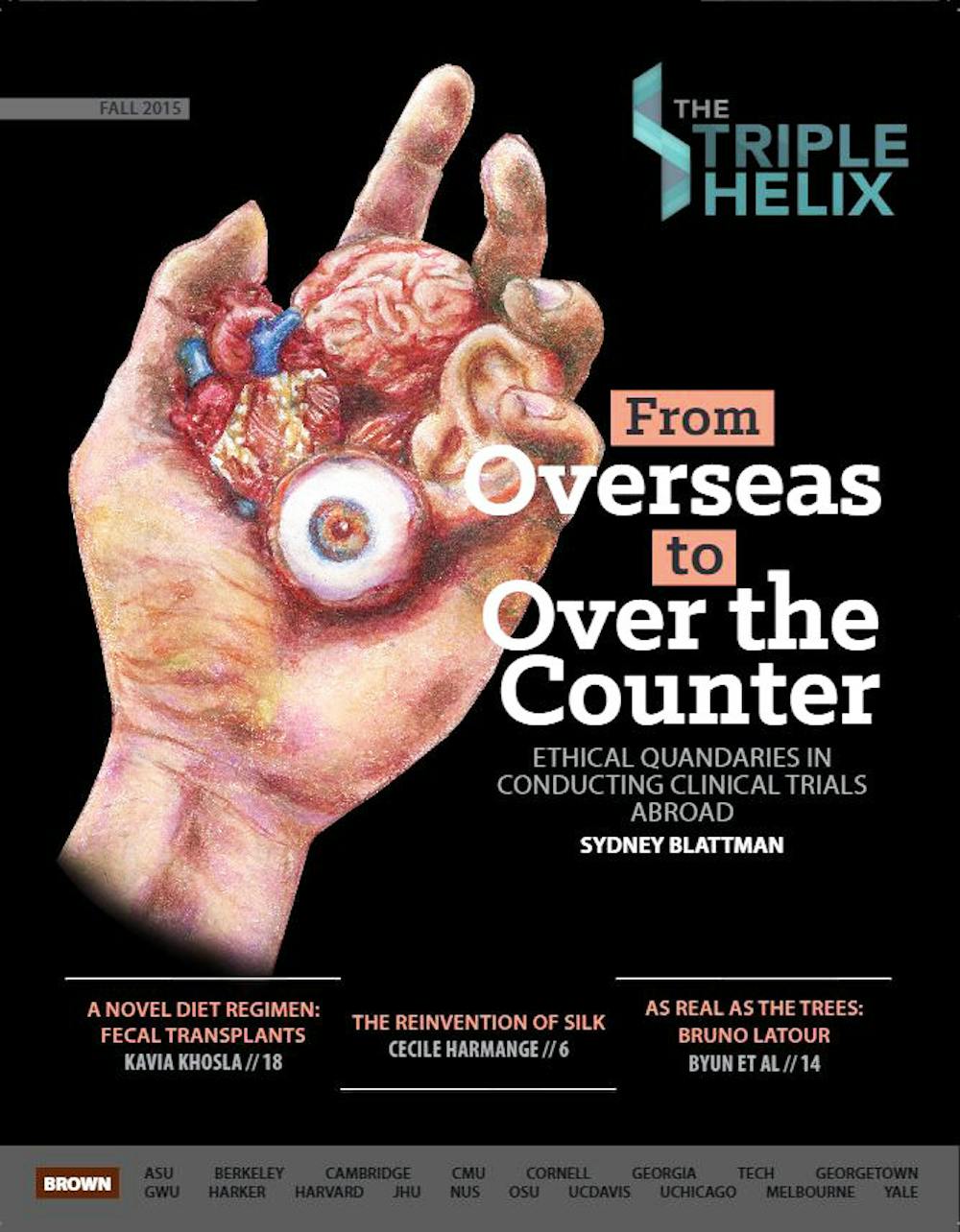Taking a departure from the multisyllabic science language omnipresent in many science publications and journals, the Triple Helix seeks to put the science occurring around students every day into context.
TTH, a student-run science publication that includes a blog and a biannual magazine exploring the intersection of science and society, was founded at Cornell in 2004. Now the publication has chapters at over 20 colleges in cities across the globe — from Singapore to Berkeley, California, from Melbourne to Providence.
Science reimagined
“New knowledge students produce about science typically go into peer journals rather than magazines like the Triple Helix,” said Russell Shelp ’16, editor-in-chief of TTH. Before the introduction of such magazines, that’s where the knowledge stayed — outside the grasp of college students not fluent in the theory of relativity, he added.
TTH takes the same ideas being investigated by students and puts them in a forum where “you don’t feel like you need a degree,” making it one of the few college publications dedicated exclusively to science that fills the void between professional peer-reviewed journals and a lack of anything, Shelp said.
“Our goal is to not just deliver the findings of science, but to explain how they relate to everyone else’s lives. … We have an interdisciplinary approach to presenting science to the world,” he said.
Case in point, the cover article of TTH’s spring 2015 issue was not an investigation into a new drug or vaccine, but an opinion piece on how and why people achieve long-standing scientific legacies — why do we remember Einstein instead of Tesla, Crick instead of Franklin?
Consider the source
For Jacob Kirschenbaum’17, a philosophy and physics concentrator and the author of the piece, it was a fondness for talking about science in abstract terms that led him to science writing. He signed up for TTH as a first-year. Around the same time, he had read an obituary in the New York Times about the death of the primatologist Alison Jolly, an experience that led him to his first story.
From reading the article, Kirschenbaum discovered Jolly was the first scientist to go into the forests of Madagascar and study lemurs — an experience that led her to groundbreaking discoveries about the effect of continental drift on evolution. Yet no one knows her name.
“I know this sounds trivial because we all learned this in ninth grade bio, but the reason we did that was because of Alison Jolly,” Kirschenbaum says. “No one knows who she is. If you ask anyone what they know about Madagascar, they’re going to mention the animated movie.”
For Kirschenbaum, TTH stood as the perfect platform to explore this “tension between history and science” — why, in the case of many scientists, no one knows their names, but everyone knows their discoveries.
The nature of TTH’s articles lets writers take a much more interdisciplinary approach than would be permitted by academic journals, but the production process is still professional. Each article is fact-checked by faculty members who are well-versed on the topic.
The graphics are also all original works, Shelp added. For those who have no intention of reading the articles, perusing TTH for the artwork alone will be worthwhile, Shelp said. Brown’s chapter of TTH is the only one that does its own design by recruiting artists from Brown and Rhode Island School of Design. These visual components demonstrate that a person need not be immersed directly in the science world to “contribute something to discussion about science,” Shelp said. “You don’t have to be spending all your time in (the lab) like I do” to make a difference, he added.
Calling all readers
Like most college publications, TTH boasts a largely anonymous reader base. “It’s hard to say how many people read it. I hope a lot of people read it. I think some people do,” Shelp said.
“It’s a great publication. … It’s so professionally done, really clean, really beautiful,” Kirschenbaum said.
But it’s more than the glossy sheen that makes magazines like TTH stand out. It’s the issues they bring up — problems in society that we’re typically exempt from grappling with when they remain only in academia.
“We talk a lot on this campus about politics, and we talk a lot about social issues, … and those are things we need to be talking about,” Kirschenbaum said. “But there are crazy things going on with science right now — the ethical questions about medicine, about research, about the environment. … Those should also be in our campus conversation.”
“I think the Triple Helix — if it had more exposure — would help,” he added.
A new edition of TTH came out last week.





